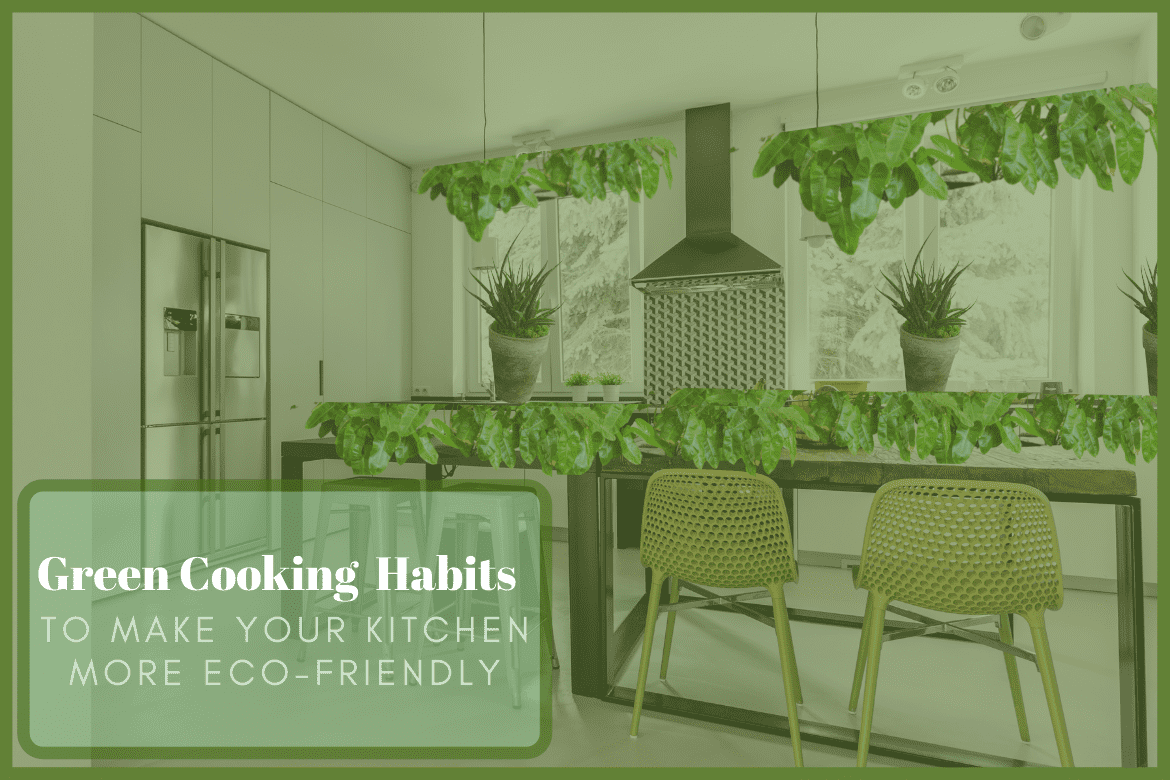Reducing food waste is what we tend to think of when it comes to “greening” our kitchens; as 1/3 of food produced globally is wasted. However, there are also green cooking habits that will make your kitchen more eco-friendly/energy efficient.
Keep in mind you are not expected to adapt all of these habits at once. You do not have to make sweeping changes. We want to make change reasonable and attainable. It’s better to make small change that you can maintain than no change. Whatever change you can make, will help reduce your carbon footprint.
With that in mind, we have put together this list of green cooking habits that will make your kitchen more eco-friendly.
Green Cooking Habits to Make Your Kitchen More Eco-Friendly
1. GREEN KITCHEN HABITS TO REDUCE WASTE FOR EARTH MONTH AND BEYOND
Read all of the suggestions in this Green Kitchen Habits to Reduce Waste for Earth Month and Beyond post and follow as many of the recommendations as possible.
2. ENERGY-EFFICIENT COOKING
These changes to our cooking routines will help decrease the energy we use.
Minimize your Oven Use
If you are cooking multiple dishes or large quantities that require your oven, then use your oven. Just be sure to use as much of the oven heat as possible. If possible, use a toaster oven, or even a microwave, as both of these appliances will save energy. Pressure cookers and air fryers are also great energy savers as they use considerably less energy than a full-size oven.
These smaller appliances also generate less heat in the kitchen, so you don’t have to use more air conditioning.

Do Not Preheat Your Oven
Preheating is no longer necessary with most newer oven models as they reach the desired temperature so quickly. There will still be dishes that are exceptions to this rule like soufflés, fondants, and other finicky dishes that are very sensitive to exact temperatures. Use an oven thermometer to determine how long it takes your oven to heat up so you can optimize cooking time.
Turn the Oven/Stove Off 5 minutes earlier
If you turn the oven off 5 minutes prior to the end of the cooking time, you can keep the dish in the oven and finish cooking on the residual heat. This also applies to anything that you are cooking on top of your stovetop. Use an oven thermometer to determine how long it takes your oven to cool down so you can optimize cooking time.
Make Sure the Pot/Pan Fits the Burner
When using your stovetop, make sure that the pot/pan fits the size of the burner. For example, do not use an eight-inch pot/pan on a ten-inch burner as it wastes 40% of the burner’s heat.
Use Close-Fitting Lids
Use close-fitting lids whenever possible as they can reduce the cooking time by helping the food cook/heat faster. For example, when boiling water, a close-fitting lid will keep the heat inside which will boil the water using less energy.
3. ENERGY-EFFICIENT REFRIGERATION
Keep your Fridge at Peak Temperature
The ideal fridge temperature is generally 37 degrees (but it’s best to check with your manufacturer for the exact temperature). Having your fridge temperature too high can lead to food safety risks and if the temperature is too low, you will be wasting energy. Keep a fridge thermometer handy and adjust the temperature accordingly.
Keep your Fridge Clean
Dust in the coils of your fridge – whether it is underneath or at the back – can greatly impact its energy efficiency. Once or twice a year, unplug the fridge and remove the dust from the coils using a vacuum cleaner or duster. Consult the manufacturer for instructions if unsure.
4. GREEN COOKING HABITS
Avoid Prepared Foods as Much as Possible
Avoid processed foods by making food items from scratch whenever possible. Food will taste better, be healthier and it requires far less energy to produce. Plus, there is the added energy associated with transporting the raw goods to the manufacturer and then transporting the finished product to the stores.
If you Can, Grow Your Own
If you have the space indoors or outdoors, create a garden space where you can grow your favourite vegetables and/or herbs. Plus, you can use your own composted kitchen waste.
Save the Rinse Water from your Food
If you save the rinse water you use to wash your fruit and vegetables, you can then use it to water your plants. Plus, the products add nutrients to the water which can be beneficial to the plants.
Use Silicone Baking Mats Rather Than Parchment Paper
Silicone baking mats are the perfect kitchen tool as they are reusable and easy to clean. Parchment paper is generally a one-time-use product and creates unnecessary waste.
Reuse your Aluminum Foil
Did you know that foil can also be reused? Providing it is not ripped or soiled, just wipe it clean, fold it up, and save it for next time. Another great tip is to keep or rescue foil to wrap up leftovers or help reheat them the next day.
_______________________________________________________________________
How many of these green kitchen habits do you already incorporate into your daily routine? Are there any you will change going forward? Do you have any green cooking habits that we should add to our list? Please let us know in the comments.
As Earth Hour is done and Earth Month winds down, we need to focus on how we can carry that awareness with us throughout the year.





